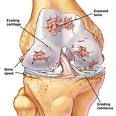Juvenile rheumatoid arthritis, also known as juvenile idiopathic arthritis, is the most common type of arthritis in children under the age of 16.
The cause of Juvenile rheumatoid arthritis is not known.
It is thought to be an autoimmune illness. In this type of condition, the body's immune system mistakenly attacks and destroys healthy body tissue.
It is divided into several categories:
- Systemic Juvenile rheumatoid arthritis - involves joint swelling or pain, fevers, and rash. It is the least common category.
- Polyarticular Juvenile rheumatoid arthritis - involves many joints. This form of Juvenile rheumatoid arthritis may turn into rheumatoid arthritis. It may involve large and small joints of the legs and arms, as well as the TMJ and cervical spine.
- Pauciarticular Juvenile rheumatoid arthritis - involves only a few joints, usually the hips, knees, or ankles.
There are three main types of juvenile rheumatoid arthritis:
- Oligoarthritis - This variety affects fewer than five joints during the first six months of the disease. It also is the variety most likely to feature eye inflammation, which can cause blindness in rare cases.
- Polyarthritis - This variety affects five or more joints during the first six months of the disease. Signs and symptoms are usually confined to the joints.
- Systemic - Formerly known as Still's disease, this type can feature swollen lymph nodes, rashes and fever — which may come and go quickly. It can also cause inflammation of internal organs.
The most common signs and symptoms of juvenile rheumatoid arthritis are:
- Pain
- Joint stiffness
- Joints may be warm or swollen and sometimes red
- Limited range of motion
- A child may stop using an affected limb or may limp
- Back pain
- Eye pain / Red eyes
- Increased pain when looking at light (photophobia)
- Vision changes
- Enlarged liver
- Enlarged spleen
- Swollen lymph nodes
- Some of the most common blood tests for suspected cases of juvenile rheumatoid arthritis include:
-Anti-nuclear antibody.
-Rheumatoid factor.
-CBC count with differential and platelet count
-Alanine aminotransferase (ALT) test
- In many children with juvenile rheumatoid arthritis, no significant
abnormality will be found in these blood tests.
-Urinalysis with microscopic examination
- Imaging studies:
-Bone scaanning
-MRI
-CT csaniing of long bones
-Echochardiography
- Other procedures:
-Arthrocentesis
-Pericardiocentesis
Perform dual-energy radiograph absorptiometry (DXA) scanning to document osteopenia in children with polyarticular juvenile rheumatoid arthritis.
Medications
- Nonsteroidal anti-inflammatory drugs (NSAIDs).
- Disease-modifying antirheumatic drugs (DMARDs). Doctors use these medications when NSAIDs alone fail to relieve symptoms of joint pain and swelling. They may be taken in combination with NSAIDs and are used to slow the progress of juvenile rheumatoid arthritis.
- methotrexate (Rheumatrex)
- sulfasalazine (Azulfidine).
- Tumor necrosis factor (TNF) blockers.
- Corticosteroids.
In very severe cases of juvenile rheumatoid arthritis, surgery may be needed to improve the position of a joint.








0 comments:
Post a Comment